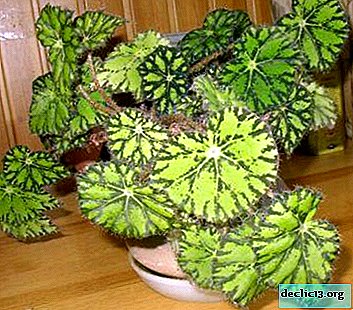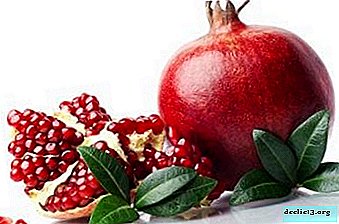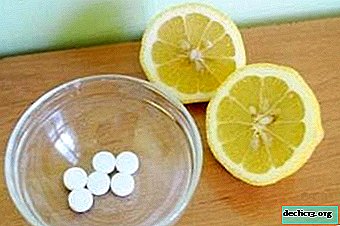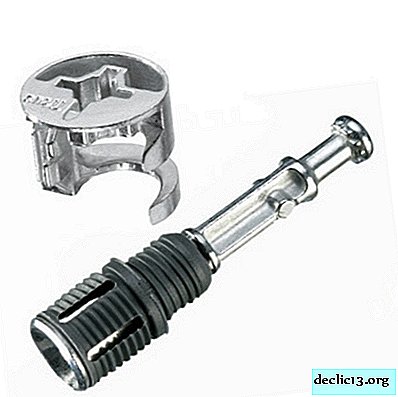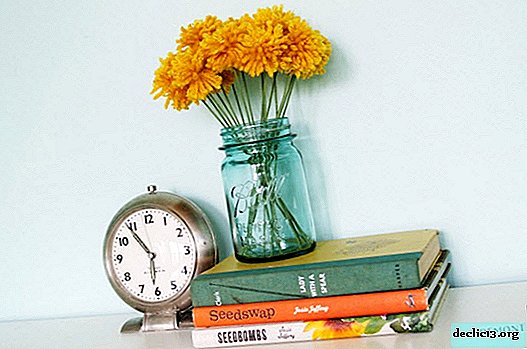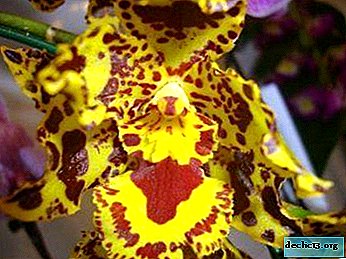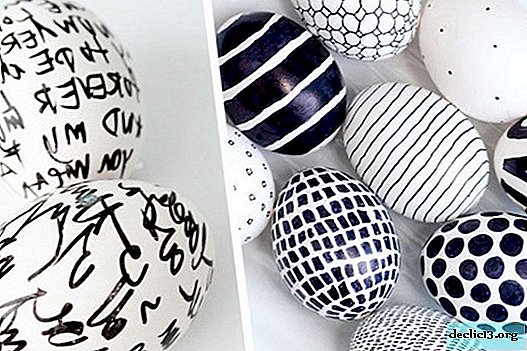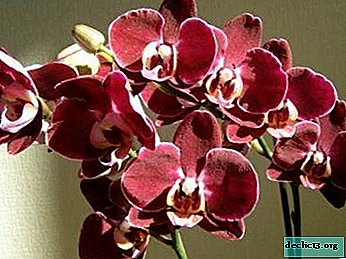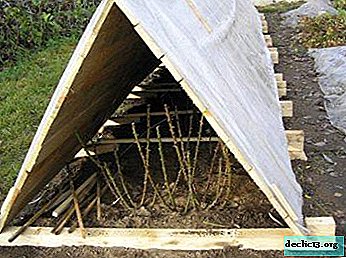Quality care for room geraniums at home and in the garden

Almost every experienced grower has geranium in his arsenal of plants.
However, this lovely flower is often found in ordinary amateur gardeners. It fits perfectly into any interior, ampelous views beautifully decorate a balcony or terrace.
And how delightful pelargonium looks on the alpine slides or along the paths in the garden!
Its popularity is growing thanks to the vibrant colors and leaves. In addition, completely unpretentious in growing.
Description
Geranium is a perennial herbaceous plant of the geranium family. Its height, as a rule, is not more than 60 cm. It has green leaves and fragrant multi-colored flowers, which are collected in umbrella inflorescences.
Geranium was imported from Africa to Europe in the 17th century. In Russia, it appeared already in the 18th century. At first, geranium decorated the mansions of aristocrats, and over time, it became available to all segments of the population.
According to some reports, indoor geranium has more than 250 species. But thanks to breeders who bred a lot of new varieties and hybrids, this number is currently much larger.
 Varieties differ in shape and color of inflorescences, shades of leaves.
Varieties differ in shape and color of inflorescences, shades of leaves.
Geranium is divided into 2 groups:
- Fragrant - has inconspicuous flowers and a strong aroma.
- Blooming - characterized by beautiful inflorescences.
Geranium flowers can have different colors: red, coral, pink, lilac, white, and many other colors and shades. There is no scarlet geranium.
Growth Features
Geranium is an unpretentious plant, so the likelihood that it will not take root is very low. However, it is necessary to know some features of its growth.
Place for pot
Geranium is a photophilous plant. It is best placed on the windows of the south side of the house. In summer, its habitat may be a balcony or garden.
Important! If indoor geraniums are in the garden in the summertime, you need to remember that strong gusts of wind and rainfall can harm it.Due consideration should be given to choosing a pot. It should optimally fit the root system. If the pot is large, the plant will grow strongly and grow upward, thereby adversely affecting the quality of the flowers. For room geraniums, a small pot is best suited, 20-25 cm in diameter and 12-15 cm high.
When choosing a pot by material, it is worth giving preference to clay. In plastic pots, the soil dries poorly and there is a high probability of root decay. If a plastic pot is used, then it must be equipped with a drainage system.
The main aspects of proper watering
So that there are no cracks on the surface of the soil, it is advisable to water the geranium in a pan using water at room temperature. Excessively cold water can cause root rot and other diseases.
It is best to water the geranium with water passed through a filter. Irrigation with hard water leads to the appearance of white deposits on the ground - calcareous deposits.
Frequency
The frequency of watering geraniums depends on the time of year. In spring and summer, as a rule, it needs to be watered every other day. In autumn and winter, the frequency of watering is reduced to 1 time in 2-3 days. The given watering mode can be changed, the main thing to remember is that geranium does not tolerate excessive excess moisture.
How and when to water Pelargonium (geranium):
Pruning and pinching
 Cutting geraniums is a mandatory procedure that must be carried out every year. It gives the bush a decorative shape and provides a long and lush flowering.
Cutting geraniums is a mandatory procedure that must be carried out every year. It gives the bush a decorative shape and provides a long and lush flowering.
There are 3 types of pruning:
- The main one.
- Autumn.
- Pinch.
The main pruning is carried out in early March, when the period of growth stagnation ends. It serves to grow the "regular" shape of the bush.
Autumn pruning is carried out after the end of flowering of geraniums - around October. During it, dry shoots, inflorescences and leaves are removed. It does not affect the shape of the bush, but affects the general condition of the plant.
Pinching is the removal of the tips of the shoots.
On a note. This procedure stimulates the growth of side shoots, due to which the bush becomes more lush and beautiful.Pinch is carried out most often in the early spring and summer, although it is allowed at any time of the year, except winter.
How to form Pelargonium (Geranium). Trimming, nipping:
How to care for flowers at home?
 Since geranium is an unpretentious plant, caring for it is very simple. However, in order for the plant to bloom as long as possible and please the eye, you should know some nuances and adhere to certain rules.
Since geranium is an unpretentious plant, caring for it is very simple. However, in order for the plant to bloom as long as possible and please the eye, you should know some nuances and adhere to certain rules.
- Temperature. The most favorable temperature for the growth of geraniums is 20 - 25 degrees. However, it can exist even at +12 degrees. Lower temperatures will lead to the death of the plant.
- Humidity. Geranium can develop favorably with low humidity. However, if the air is too dry, it will negatively affect its flowering.Note! Indoor geraniums are not recommended for spraying.
- Transfer. A geranium plant is transplanted when it becomes crowded in a pot. This can be determined by the roots, which can grow into the holes of the drainage system. It is best to use a mixture of land, sand, peat and humus for planting geraniums.
Secrets for beginners or what to do to make it bloom
In order for indoor geranium to bloom, it is necessary to provide it with a comfortable existence: optimal location, suitable pot, temperature, watering, soil. However, these measures are not always enough, and there are problems with flowering. In such cases, geraniums need top dressing.
Feeding is best done at the end of February with complex fertilizers. They should contain potassium, nitrogen and phosphorus. Potassium promotes active flowering, and nitrogen favorably affects the growth of green mass.
In addition to potassium, nitrogen and phosphorus, it is important that fertilizers in their composition have: copper, zinc, iron, magnesium, boron and manganese.
Photos and names of plants
Here are some types of room geranium:






Possible problems and illnesses
Most often, geraniums are affected by diseases such as:
- gray mold;
- root rot;
- powdery mildew.
Gray mold forms on the leaves. In such cases, the plant is sprayed with antifungal drugs, after removing the affected leaves.
Important! Root rot is formed from an excess of moisture in the soil. Preventive measures with it are proper watering and a good drainage system.Powdery mildew is a disease that appears as a white coating. Usually, its occurrence is provoked by increased humidity. The fight against it is carried out with special antifungal drugs.
The pests that most often attack geraniums are:
- aphid;
- whitefly.
Aphids are pests whose halo is the lower parts of leaves. They fight with insecticides.
Whitefly This pest settles on the lower sides of the leaves. To destroy it, you can use a normal soap solution. If this method does not give a result, it is worth using special preparations to destroy this butterfly.
Resuscitation Activities
Sometimes situations arise when geraniums require emergency assistance. For example, when the plant has almost withered, some leaves and shoots have dried out, and the flowers have fallen, It is urgent to take the following measures:
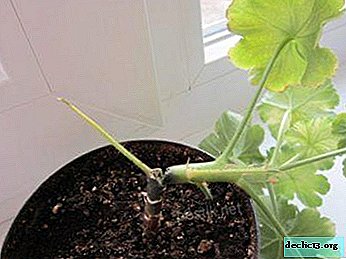 Pull the plant out of the pot (pre-water abundantly), remove rotten roots, dry leaves and shoots. After this action, almost one stalk can remain.
Pull the plant out of the pot (pre-water abundantly), remove rotten roots, dry leaves and shoots. After this action, almost one stalk can remain.- Place the plant stem in epin for 45 - 50 minutes.
- Pour fresh soil into the prepared pot and plant it there.
- Put the pot in a cool room (18-20 degrees).
- Watering at this time is necessary by spraying along the edges of the pot, without getting on the plant itself.
- Let the plant stand for some time in this room until the first leaves appear.
- Rearrange the geranium on the windowsill and ensure proper care.
Features of planting in the garden
Plant is planted in open ground after all frosts, usually in the second half of May. It’s best to choose a sunny area for her, although a slightly shaded place will do. The soil should be moist and loose.
Before disembarking from a pot, it must be well watered so that it can be easily removed in the future. After planting, you need to compact the earth around the plant with your hands so that there are no voids.
Care of geraniums in the garden consists in regular proper wateringtimely weeding of weeds, loosening of the soil, and if necessary - protecting it from pests and diseases.
So, following the rules and recommendations set forth in this article, you can easily grow many beautiful bushes of geraniums that will decorate the window sills and delight the eyes of others. In addition, geraniums can decorate not only the house, but also the garden, flower beds and flower beds. And the ease of care will make the growing process pleasant and not time-consuming.

 Pull the plant out of the pot (pre-water abundantly), remove rotten roots, dry leaves and shoots. After this action, almost one stalk can remain.
Pull the plant out of the pot (pre-water abundantly), remove rotten roots, dry leaves and shoots. After this action, almost one stalk can remain.
